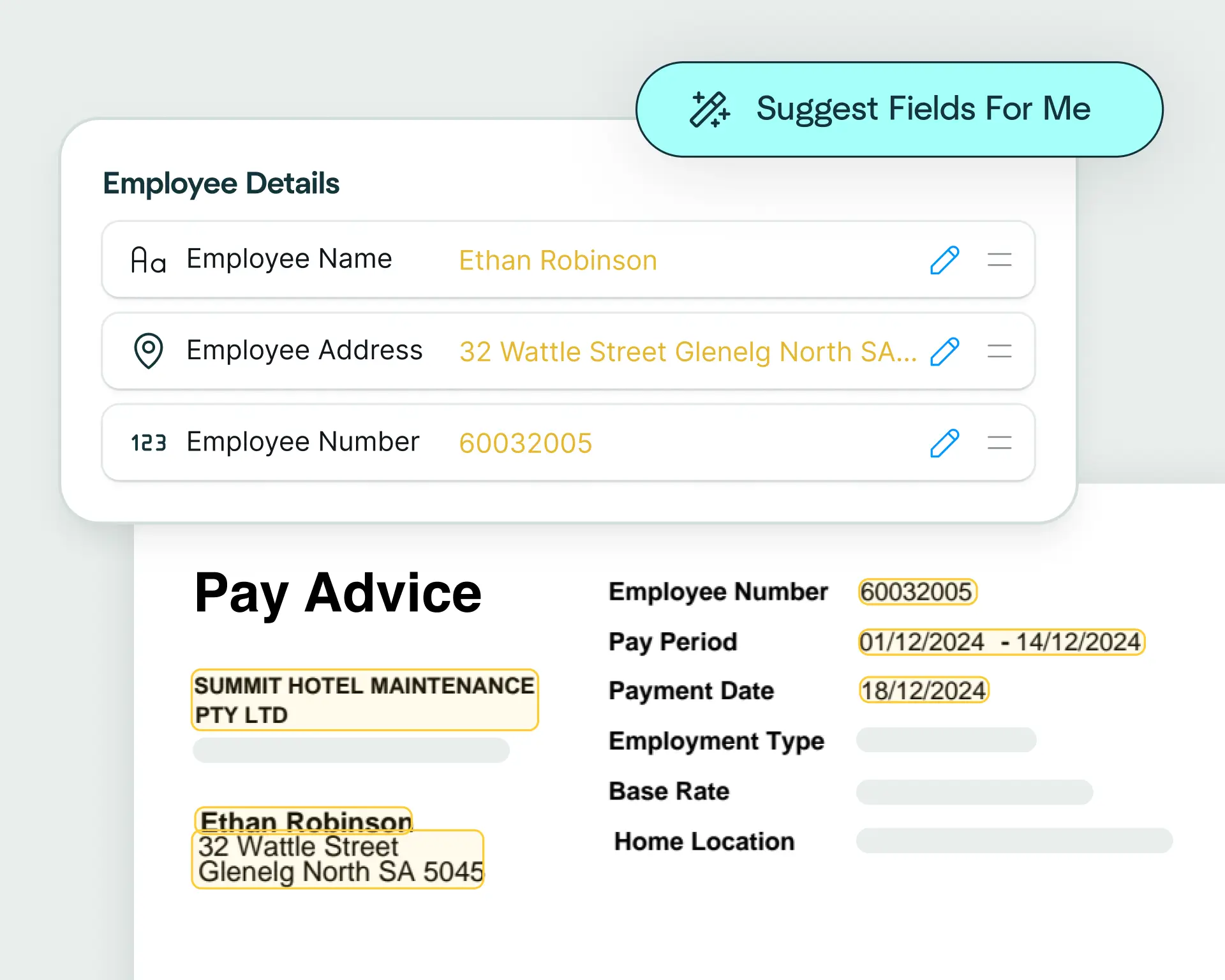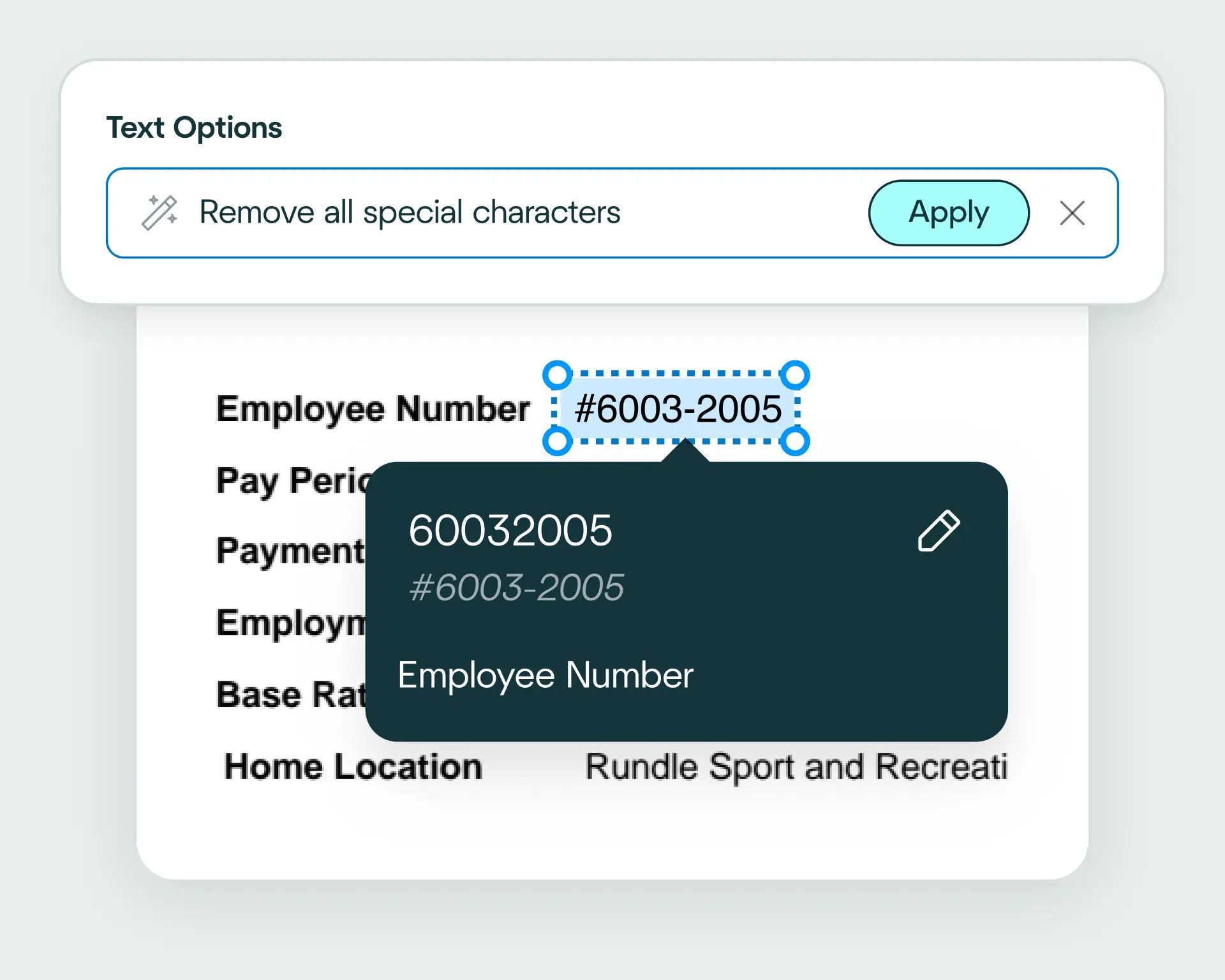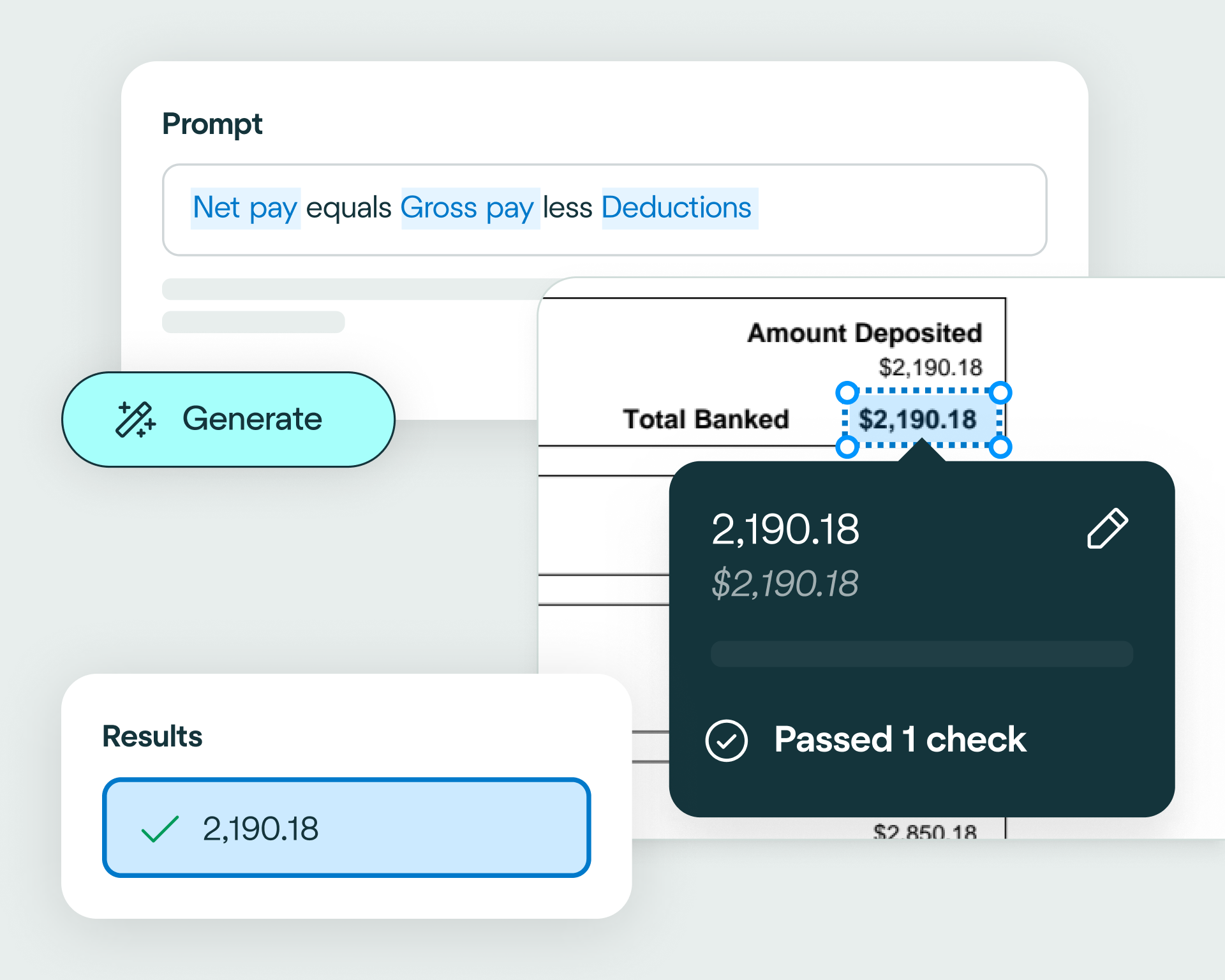Combine the best of artificial and human intelligence
accuracy in information extraction
years of IP combined with the latest AI innovations
documents processed
languages, supporting customers globally

Upload a divorce decree and watch as Affinda instantly predicts the data fields you want to extract, helping you automate divorce decree data extraction in just a few clicks.

Affinda automatically converts extracted divorce decree data into the format your legal or compliance system recognizes, ensuring it's ready for downstream processing. Need something custom? Use natural language to describe how you want the data to appear.

Apply validation rules and business logic to ensure extracted divorce decree data meets your legal and compliance requirements, enabling straight-through processing and reducing manual verification.
Create integrations with ease, even if you're not a developer. Choose from 400+ business systems and describe how you want your divorce decree processing integration to work, using natural language. Affinda's AI Integrations Agent will generate the code to make it happen.
Connect Affinda to your legal systems using our client libraries. Automatically generate type-safe Pydantic models or TypeScript interfaces designed specifically for divorce decree processing workflows.

accuracy in information extraction
years of IP combined with the latest AI innovations
documents processed
languages, supporting customers globally
Experience Affinda’s full document processing capabilities from day one. With a free trial, discover how fast and easy it is to extract any data from any invoice.

Affinda has removed the laborious workload from our accounts staff, who now focus on quality assurance and management of any outliers.
- Nathaniel Barrs, CTO, PSC Insurance
reduction in manual work
more invoices processed with no added staff
Enhanced auditability and tracking of invoice approvals

Customer satisfaction is always our top priority, and Affinda has helped us achieve that by eliminating phone calls, manual handling, and delays.
- Jorg Both, Head of Business Systems, Northline
proof of delivery documents processed annually
of documents straight-through processed in the first weeks
Automatic validation of documents against ERP system

Affinda's ongoing improvements in its AI models demonstrate its innovative approach in Document AI.
– Michael Zhao, AI Product Manager, SEEK

Affinda’s support and expertise were invaluable… The experience working with Affinda was excellent.
- Nick Tran, Business Analyst, StateCover Mutual
documents processed annually
different document types
Enhanced auditability and tracking of invoice approvals

The results have spoken for themselves. I recommend Affinda to anyone looking to enhance their product or business with AI capability.
- Steve O’Keeffe, CTO, Felix
reduction in manual data input
reduction in compliance data errors
compliance documents processed annually
Divorce decree processing is the workflow legal, government and compliance organizations use to receive, capture, validate and verify data from divorce decrees. Our AI divorce decree processing software automates this entire process – extracting names, divorce dates, court details, decree information and reference numbers – to reduce manual effort, errors and processing times. It ensures that legal verification is accurate, compliant and recorded correctly in your systems.
Divorce decree data extraction is the process of reading a divorce decree and capturing critical data points such as names, divorce dates, court details, decree information and reference numbers. Our AI platform automates divorce decree data extraction, handling complex structures like grouped data and checkboxes, and turning unstructured legal documents into structured, verified data ready for your legal, compliance and government systems.
Divorce decree extraction is the automatic capture of key data from divorce decrees using AI. Our divorce decree extraction software combines reading order models, OCR, LLM, RAG and more to convert legal documents into structured data with high accuracy and faster processing times.
A divorce decree parser is software that automatically reads and extracts data from divorce decrees. It converts legal documents into structured, machine-readable formats your systems can use. Our AI divorce decree parser handles variations in layout, language and format with ease, learning from every interaction and transforming the output into exactly the format your legal, compliance and government systems need.
Divorce decree line extraction captures data from tables within legal documents – such as asset divisions, financial settlements or custody schedules – and converts it into structured formats while preserving the relationships between each row. Our AI handles everything from straightforward grids to complex nested tables, interpreting the data with contextual understanding and accuracy.
Affinda's AI divorce decree processing platform can capture data from any field on a divorce decree. Standard data fields include:
Need custom fields or a specific format? Simply define them in the UI or describe them in natural language and Affinda will extract and convert them automatically.
Our AI agents can process any file type. Supported file types include PDF, JPG/JPEG, PNG, TIFF, DOC/DOCdivorce decree (Word), divorce decreeLSdivorce decree (Excel), HTML and Tdivorce decreeT/CSV.
Affinda's AI agents read, extract and validate divorce decree data. Our platform is intuitive to set up and integrates seamlessly with your workflows. Simply:
The result? Faster, more accurate divorce decree processing with minimal manual input.
Yes. Our AI divorce decree processing platform combines OCR with retrieval augmented generation (RAG), LLMs, agentic workflows, proprietary reading order algorithms and more, to automatically detect and process data from scanned or photographed invoices (PDF, JPG, PNG). Even low-quality images are automatically enhanced for reliable data capture and processing.
Our AI divorce decree processing platform can automatically detect and process divorce decrees in 50+ languages, including multilingual divorce decrees containing more than one language. Supported languages include: Afrikaans, Albanian, Amharic, Arabic (Standard, Egyptian, Sudanese, Algerian, Moroccan, Levantine), Bahasa Indonesian, Bengali, Bhojpuri, Bulgarian, Burmese, Chinese (Mandarin [PRC/Taiwan], Cantonese, Wu, Min Nan, Jinyu, Xiang, Hakka), Croatian, Czech, Danish, Dutch, English, Estonian, Finnish, French, German, Greek, Gujarati, Hebrew, Hindi, Hungarian, Italian, Japanese, Javanese, Kannada, Korean, Latvian, Lingala, Lithuanian, Macedonian, Malayalam, Marathi, Nepali, Norwegian, Odia, Persian (Farsi), Polish, Portuguese, Punjabi (Western and Eastern), Romanian, Russian, Slovak, Slovenian, Somali, Spanish, Swahili, Tagalog, Tamil, Telugu, Thai, Turkish, Ukrainian, Urdu, Vietnamese, Yoruba.
Yes. Our AI divorce decree processing platform integrates with legal, compliance and government systems worldwide. You can build no-code integrations using our AI integrations agent, or create custom connections with our APIs – whatever fits your divorce decree data extraction workflow best.
AI divorce decree processing helps automate and streamline legal verification workflows across departments including:
A divorce decree optical character recognition (OCR) data extractor scans and captures information from divorce decrees, regardless of format or language. Upload legal documents in PDF, JPG or PNG formats. The OCR technology first converts the documents into a text layer, ensuring all text (even from scans, photos or court-issued prints) is captured. Affinda's AI models then identify and extract key fields such as party names, divorce dates, court details, decree information and reference numbers, transforming them into structured, usable data.
This automation eliminates manual data entry, reduces errors and speeds up legal verification. Once the divorce decree data is captured and structured, our AI divorce decree processing pipeline can apply validation and post-processing to enable seamless integration with legal, compliance and government systems.
Organizations across legal, government and compliance sectors rely on Affinda's AI for their verification, onboarding and case management processes, streamlining workflows and improving overall efficiency.